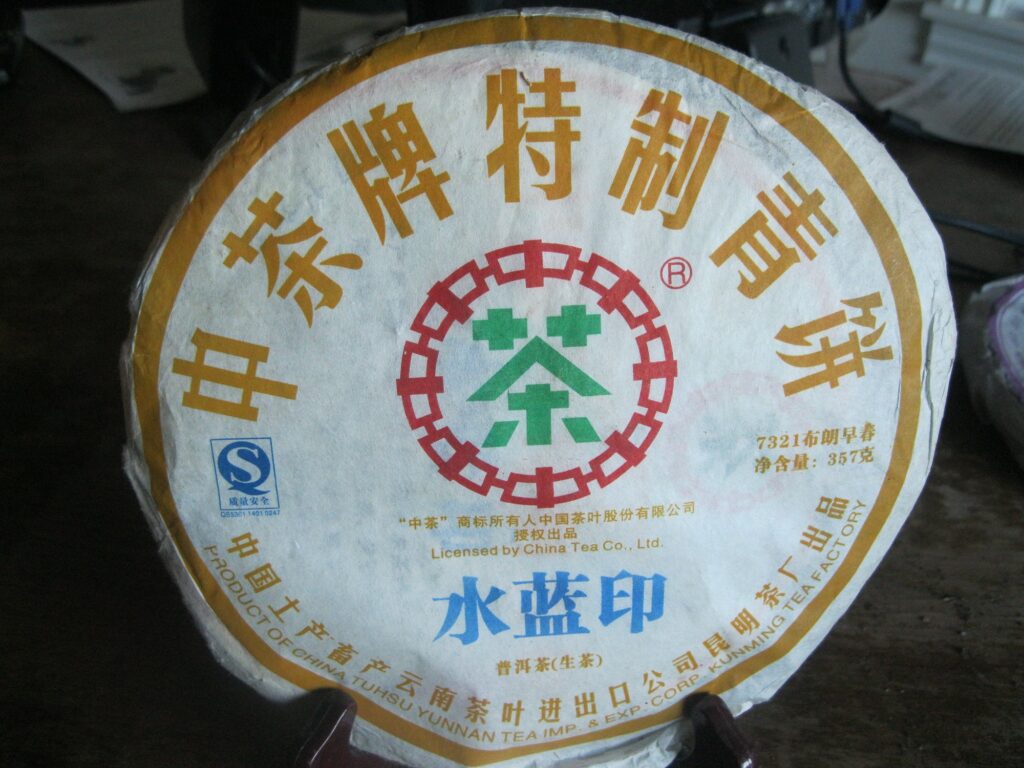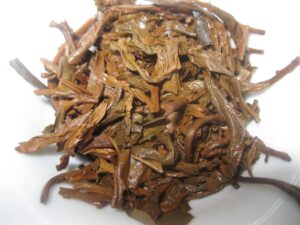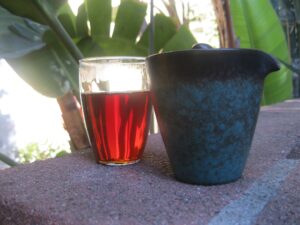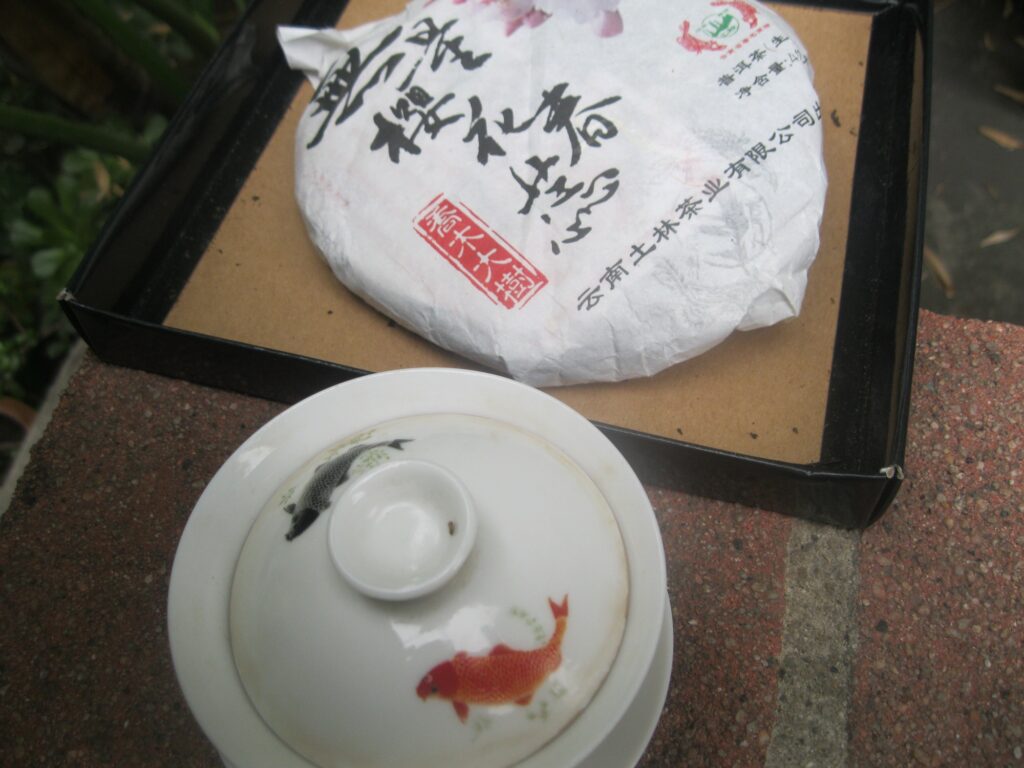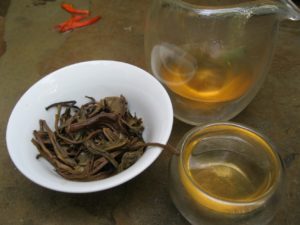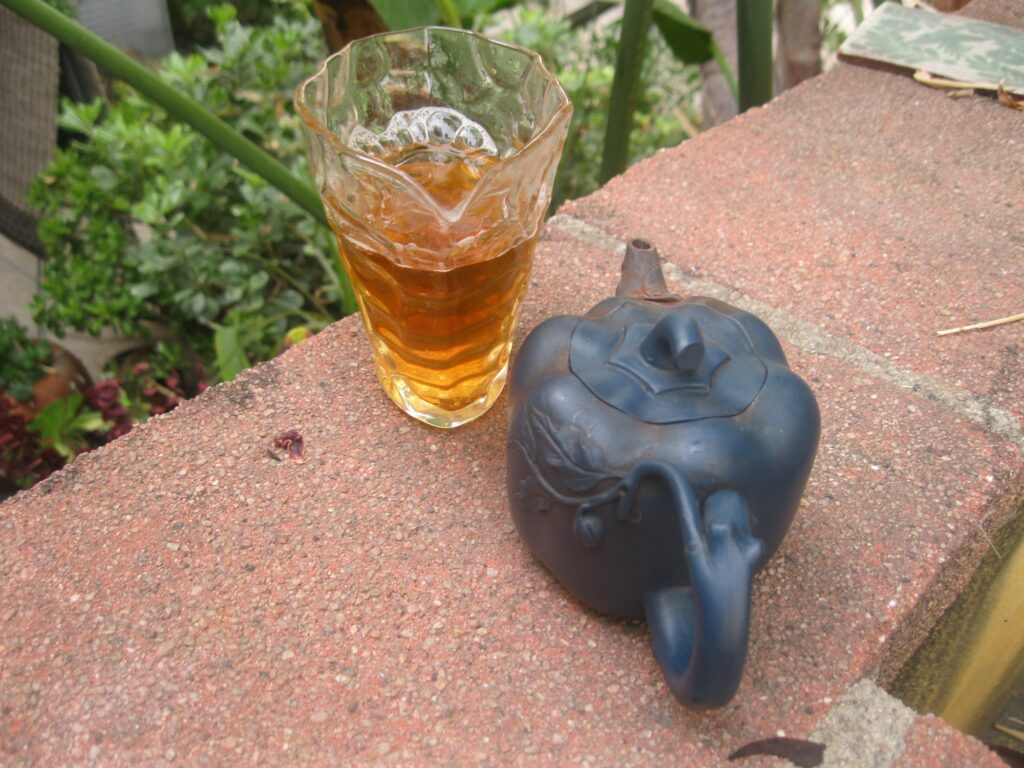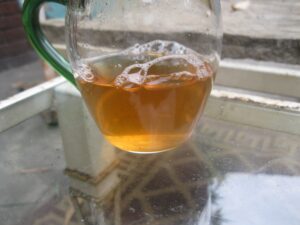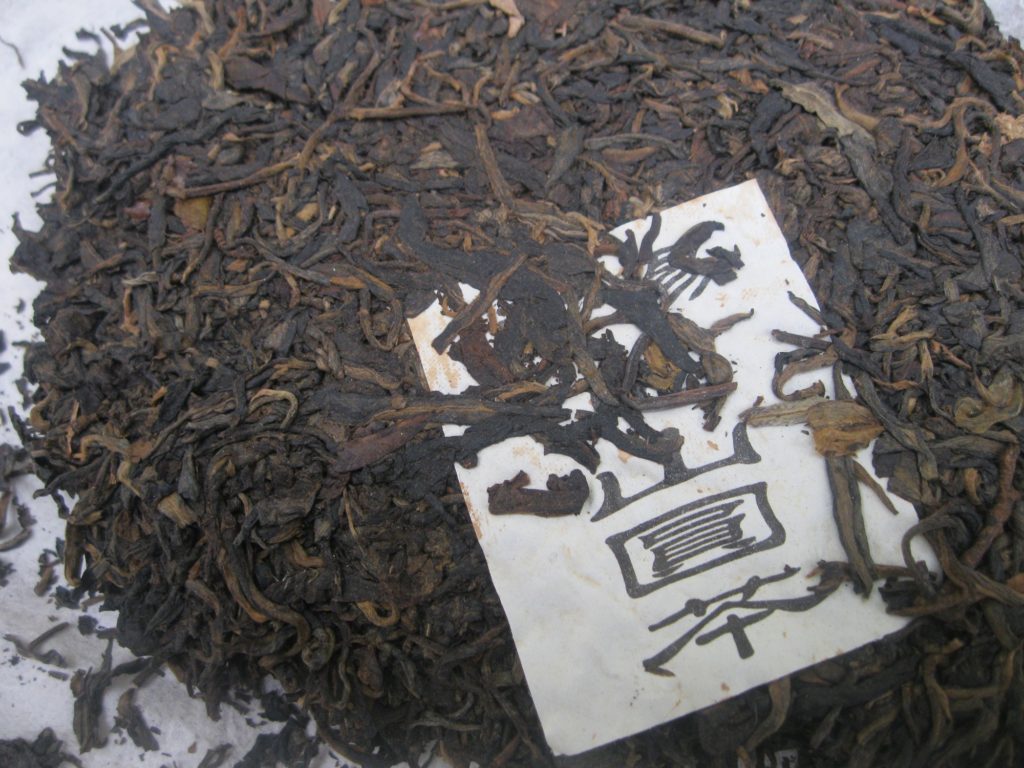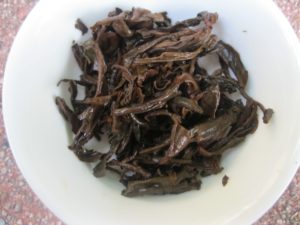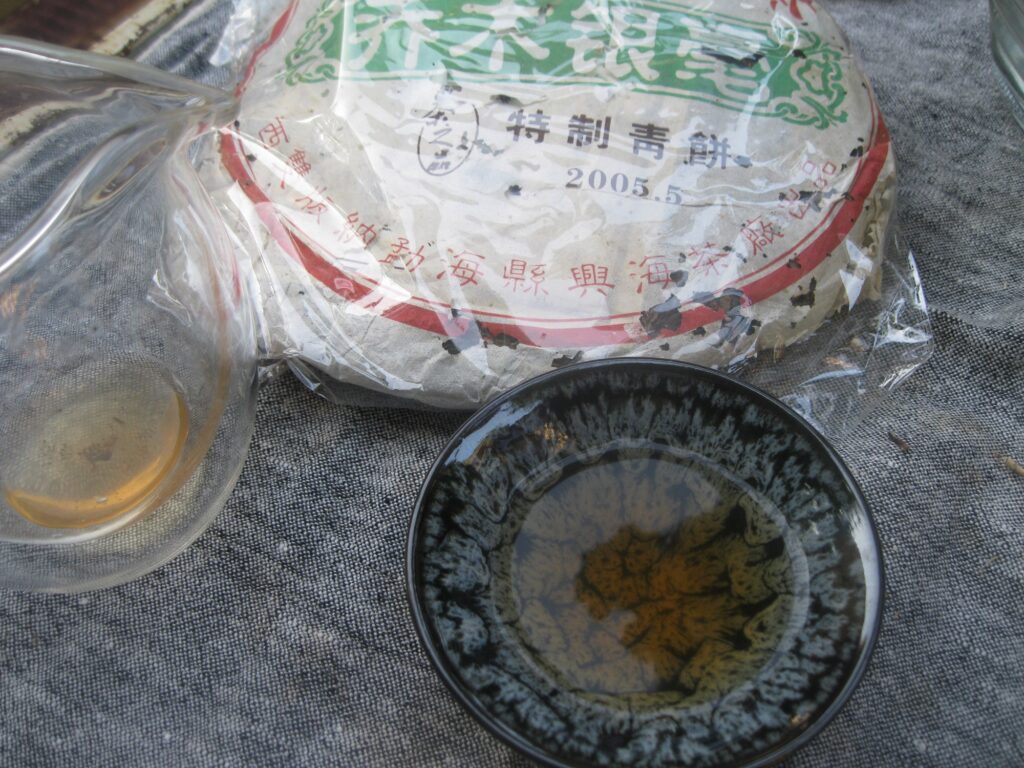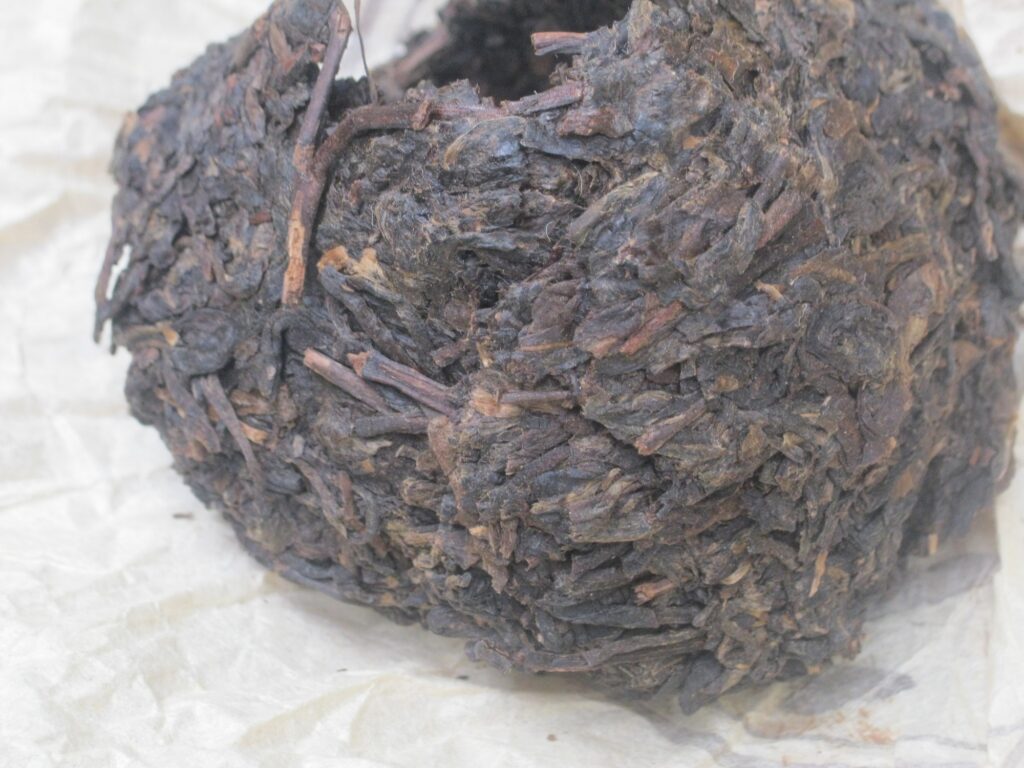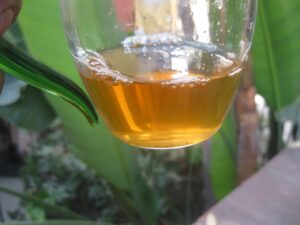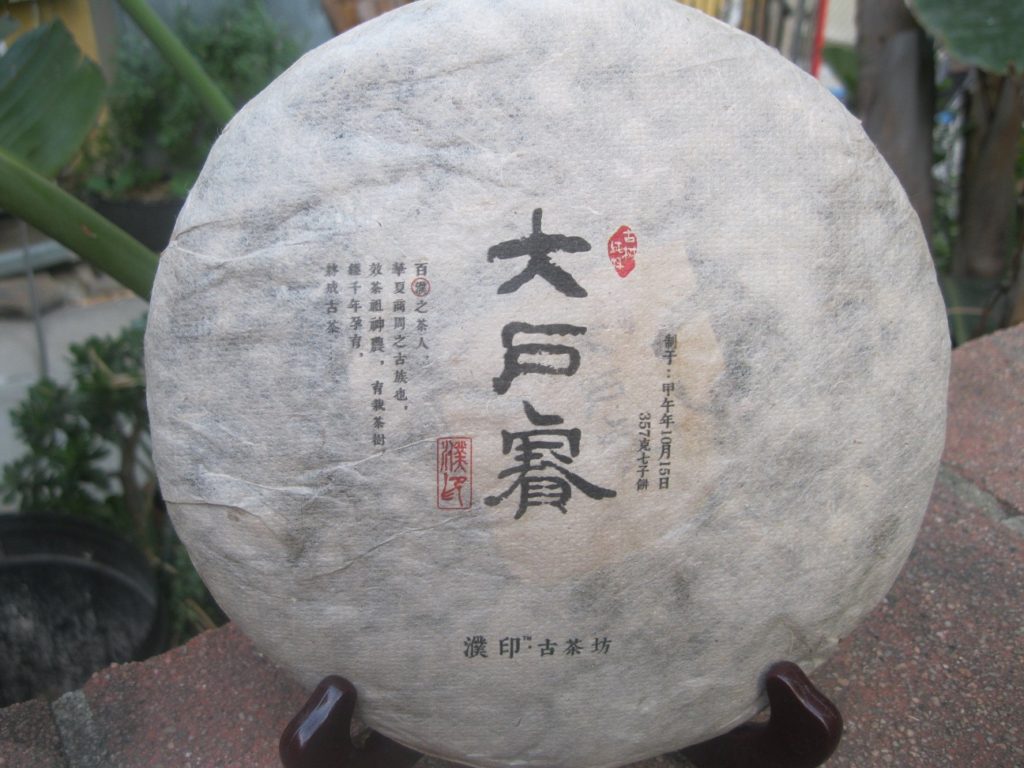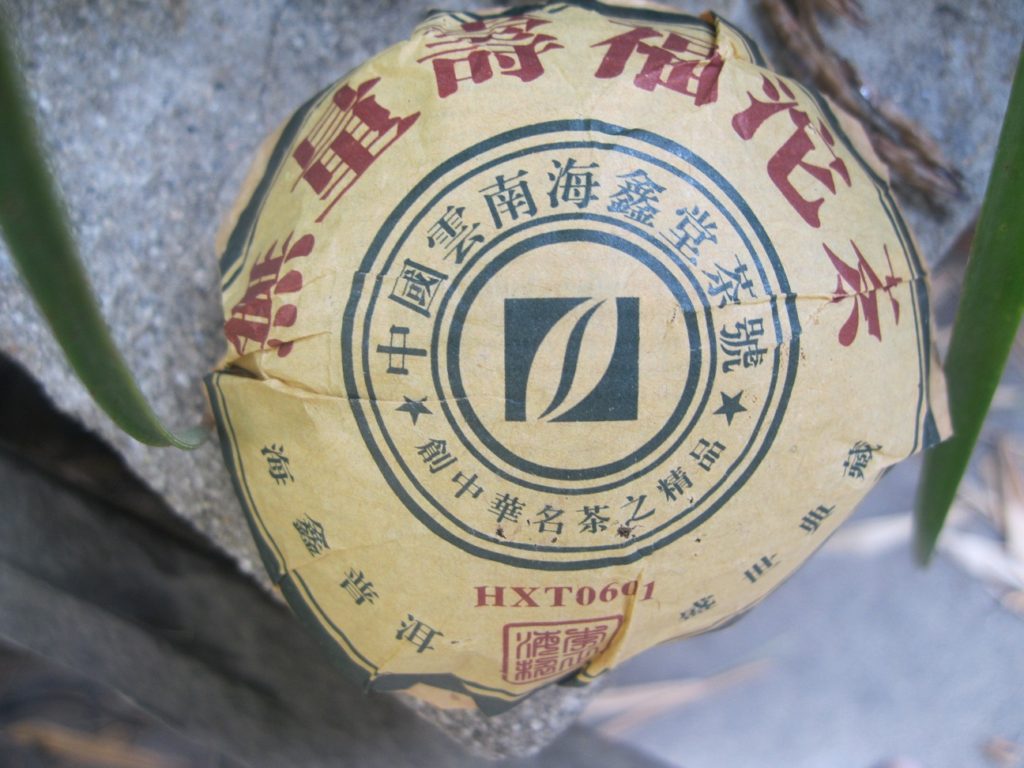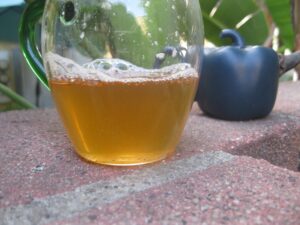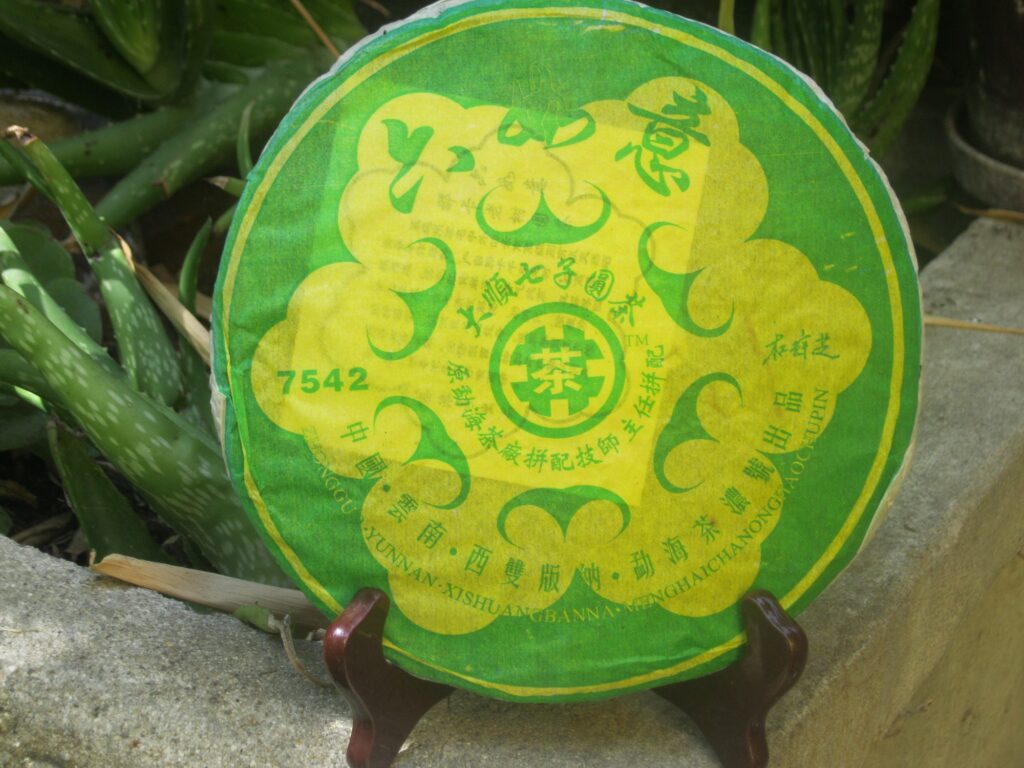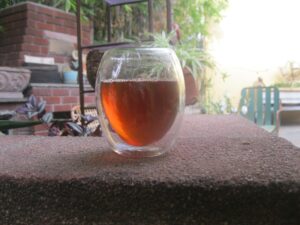Puerh Rating: Water Blue Mark
The Puerh Junky Rating System (PJRS) takes on the Water Blue Mark. This is the Kunming Tea Factory’s (KMTF) reproduction of a Menghai TF creation from, as early as I could tell, ’98. The purpose of the PJRS is to objectively adjudge a production based on seven criteria, otherwise minimizing subjective preferences. It comes in handy for an atrocity like the Water Blue Mark.
After three rounds the results were as follows:
- Aroma 10
- Clarity 10
- Sweetness 12
- Viscosity 9
- Astringency 11
- Huigan 11
- Qi 4
Reflections
The Water Blue Mark’s highest score was in sweetness. It is surprisingly sweet. This attribute says nothing about it’s taste profile however. It is very, very heavy tobacco. More on that in the conclusion. All of the scores appear to be conservative, particularly the qi score. Even the Puerh Junky has better qi days than others. In assessing the score sheet, it is evident that the Blue Water Mark has staying power in terms of sweetness and viscosity, while the huigan and clarity improve.
Now the obligatory ’07 KMTF refrain. . . The reputation all for 07 Zhongcha productions have been written off by the experts. Another man’s trash is the Puerh Junky’s treasure. The fact is that in ’07 KMTF went bankrupt but the factory kept churning, even more furiously. In terms of its role in the development of ripes they deservedly hold their demarcation as Factory #1. Almost all their other classic raw productions seem to have some history with Factory #2, Menghai, modern day Dayi.
In assessing a range of Zhongcha/KMTF productions from ’16-’06, Zen seems to predominate their house style. The Puerh Junky associates this primarily with eastern Lincang material, Bangdong etc. One would expect the Water Blue Mark to not deviate much with a name like Water Blue Mark. Wrong. And herein lies the atrocity.
Conclusions
The Water Blue Mark comes at you more like the OG Gangsta or the Longevity Tuo. Brewed in a gaiwan, this puerh exhibits NO mercy. Perhaps this is what prevented detection of qi. It is wicked strong, but not harsh and edgy. Deep to medium notes, something that must be brewed in clay. It has a petrolated and woody taste with the absence of rockiness that I most strongly associate with Dayi. It’s dry burning, hot wood, not foresty moist and minty. Yeah! It’s dry-stored but not dried out. It’s active as all getout. There is nothing Watery or Blue about this offering. It’s Green Mark, some iteration thereof, all the way. Macho con tobacco. Puerh Rating: Water Blue Mark
67/105 B

